Related Research Articles

The Armed Forces of the Philippines (AFP) are the military forces of the Philippines. It consists of three main service branches; the Army, the Air Force, and the Navy. The President of the Philippines is the Commander-in-Chief of the AFP and forms military policy with the Department of National Defense, an executive department acting as the principal organ by which military policy is carried out, while the Chief of Staff of the Armed Forces of the Philippines serves as the overall commander and the highest-ranking officer in the AFP.

The Commonwealth of the Philippines was an unincorporated territory and commonwealth of the United States that existed from 1935 to 1946. It was established following the Tydings–McDuffie Act to replace the Insular Government of the Philippine Islands and was designed as a transitional administration in preparation for full Philippine independence. Its foreign affairs remained managed by the United States.
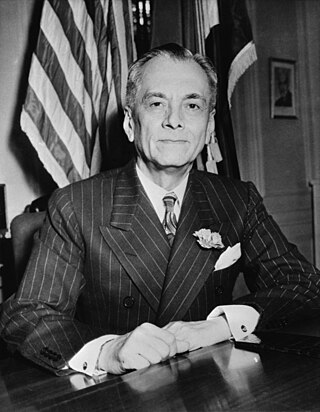
Manuel Luis Quezon y Molina, also known by his initials MLQ, was a Filipino lawyer, statesman, soldier, and politician who was president of the Commonwealth of the Philippines from 1935 until his death in 1944. He was the first Filipino to head a government of the entire Philippines and is considered the second president of the Philippines after Emilio Aguinaldo (1899–1901), whom Quezon defeated in the 1935 presidential election.

James Basevi Ord was a United States Army lieutenant colonel killed in an air crash at Camp John Hay, Philippines. At the time, Ord was serving as the Assistant Military Advisor to the Commonwealth of the Philippines, under United States Military Advisor Douglas MacArthur. Ord was a member of the West Point class of 1915, "the class the stars fell on", that also included Omar Bradley and Dwight Eisenhower.

The National Defense Act of 1935 was passed by the Philippine National Assembly on December 21, 1935. The purpose of this act was to create an independent Philippine military, a move interrupted by the outbreak of the Second World War.
The Offshore Patrol (OSP) also known as the Mosquito Fleet was a small naval branch of the United States Army, intended for inshore defense of the Commonwealth of the Philippines. It was active from February 9, 1939 to June 30, 1946. The OSP became part of the United States Army Forces in the Far East (USAFFE) on July 26, 1941, with General Douglas MacArthur as Commander. During the Japanese invasion of the Philippines, the Patrol engaged in limited naval operations along the coastlines of Bataan and Corregidor, against the tight enemy blockade, to bring much-needed provisions to the beleaguered Filipino and American troops during the battle. Undaunted by enemy superiority, the ubiquitous patrol boats fought with zeal, courage and heroism, hitting Japanese warships with torpedoes when given the opportunity. The unit relied on speed and surprise to attack larger vessels at close range.
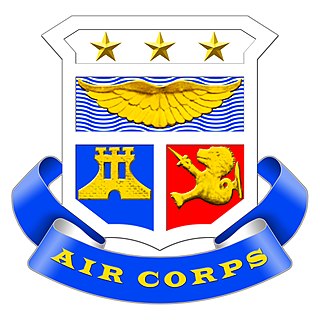
The Philippine Army Air Corps was created in 1935 as the air component of the Philippine Army. It was the predecessor of the Philippine Air Force, created in 1947.
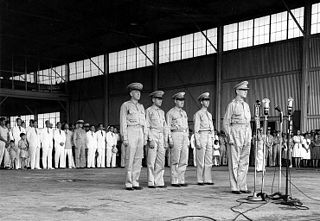
United States Army Forces in the Far East (USAFFE) was a military formation of the United States Army active from 1941 to 1946. The new command's headquarters was created on 26 July 1941, at No. 1, Calle Victoria, Manila, Luzon, the Philippines, with General Douglas MacArthur as commander. The Chief of Staff was Brigadier General Richard K. Sutherland and the Deputy Chief of Staff was Lieutenant Colonel Richard J. Marshall. The core of this command was drawn from the Office of the Military Advisor to the Commonwealth Government of the Philippines.

The Harbor Defenses of Manila and Subic Bays were a United States Army Coast Artillery Corps harbor defense command, part of the Philippine Department of the United States Army from circa 1910 through early World War II. The command primarily consisted of four forts on islands at the entrance to Manila Bay and one fort on an island in Subic Bay.

Fort Mills was the location of US Major General George F. Moore's headquarters for the Philippine Department's Harbor Defenses of Manila and Subic Bays in early World War II, and was the largest seacoast fort in the Philippines. Most of this Coast Artillery Corps fort was built 1904–1910 by the United States Army Corps of Engineers as part of the Taft program of seacoast defense. The fort was named for Brigadier General Samuel Meyers Mills Jr., Chief of Artillery 1905–1906. It was the primary location of the Battle of Corregidor in the Japanese invasion of the Philippines in 1941–42, and of the recapture of Corregidor in February 1945, both in World War II.

The Philippines campaign, also known as the Battle of the Philippines or the Fall of the Philippines, was the invasion of the American territory of the Philippines by the Empire of Japan and the defense of the islands by United States and the Philippine Armies during World War II.
Field Marshal of the Philippines was a rank created in 1936 to be held by Douglas MacArthur.
The Commonwealth of the Philippines was attacked by the Empire of Japan on 8 December 1941, nine hours after the attack on Pearl Harbor. Although it was governed by a semi-independent commonwealth government, the United States of America controlled the Philippines at the time and possessed important military bases there. The combined Filipino-American army was defeated in the Battle of Bataan, which saw many war crimes committed and the Battle of Corregidor in April 1942, but guerrilla resistance against the Japanese continued throughout the war. Uncaptured Filipino army units, a communist insurgency, and supporting American agents all played a role in the resistance. Due to the huge number of islands, the Japanese never occupied many of the smaller and more minor islands. The Japanese control over the countryside and smaller towns were often tenuous at best.
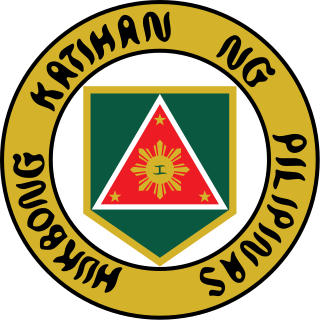
The Philippine Army (PA) is the main, oldest and largest branch of the Armed Forces of the Philippines (AFP), responsible for ground warfare and as of 2021 had an estimated strength of 143,100 soldiers backed by 131,000 ready reserves. The service branch was established on December 21, 1935, as the Philippine Commonwealth Army. The Philippine Army has engaged in many conflicts including the ongoing Communist rebellion in the Philippines, the Moro conflict and, alongside other national military forces, in conflicts of international scope.

The Japanese occupation of the Philippines occurred between 1942 and 1945, when the Japanese Empire occupied the Commonwealth of the Philippines during World War II.
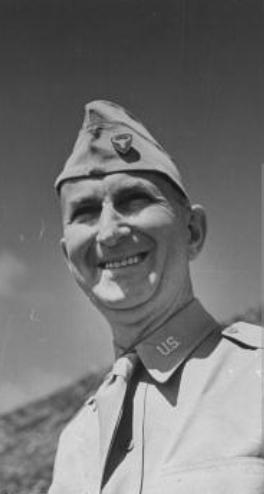
George Marshall Parker Jr. was an officer of the United States Army with the rank of major general. General Parker commanded the Philippine II Corps during the Battle of Bataan.

The Philippine Army was established on December 21, 1935, as the Army of the Philippines, with a general headquarters in Manila, and units and formations based throughout the provinces of the Philippines.
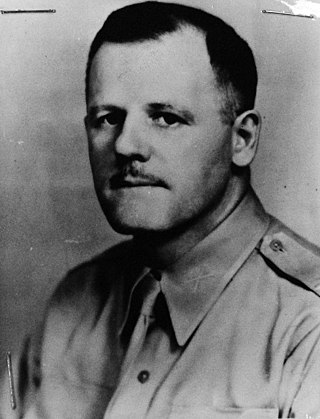
Albert Monmouth Jones was an American major general and known for his command of the 51st Philippine Division and subsequently I Philippine Corps during the Japanese invasion in World War II.

Basilio José Segundo "Basil" Pica Valdés was a Filipino doctor, general and minister. Valdes was chief of staff of the Armed Forces of the Commonwealth of the Philippines from 1939, and was in 1941 appointed Secretary of National Defense by President Manuel L. Quezon. After the Japanese invasion of the Philippines at the beginning of the Second World War, he was one of the members of Quezon's war cabinet in exile.
Negros Force was activated by USAFFE on September 1, 1941, to May 12, 1942. The force did not fought during the war but played in organizing units deployed to different sector. The force also continued to fight as a guerilla after the surrender. Although the two provinces was never united due to different affiliation of the commanders.
References
- ↑ Personal Letters F.W. Seefeld to family